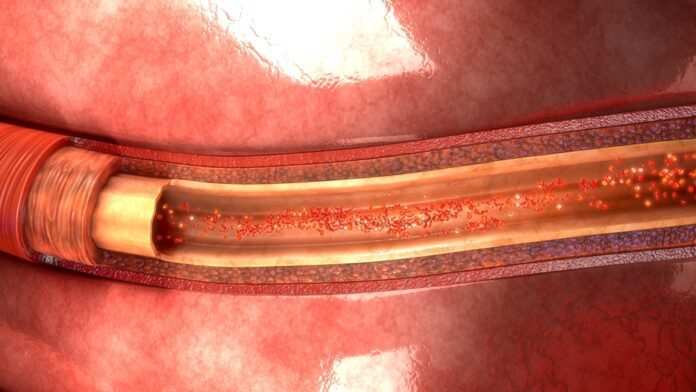Overview
A cerebral arteriovenous malformation (AVM) is an abnormal connection between the arteries and veins in the brain that usually forms before birth.
Cause
The cause of cerebral AVM is unknown. An AVM occurs when arteries in the brain connect directly to nearby veins without having the normal small vessels (capillaries) between them.
AVMs vary in size and location in the brain.
An AVM rupture occurs because of pressure and damage to the blood vessel. This allows blood to leak (hemorrhage) into the brain or surrounding tissues and reduces blood flow to the brain.
Cerebral AVMs are rare. Although the condition is present at birth, symptoms may occur at any age. Ruptures happen most often in people ages 15 to 20. It can also occur later in life. Some people with an AVM also have brain aneurysms.
Symptoms
In about one-half of people with AVMs, the first symptoms are those of a stroke caused by bleeding in the brain.
Symptoms of an AVM that is bleeding are:
-
Confusion
-
Ear noise/buzzing (also called pulsatile tinnitus)
-
Headache in one or more parts of the head may seem like a migraine
-
Problems walking
-
Seizures
Symptoms due to pressure on one area of the brain include:
-
Vision problems
-
Dizziness
-
Muscle weakness in an area of the body or face
-
Numbness in an area of the body
Exams & Tests
Your health care provider will perform a physical examination. You’ll be asked about your symptoms, with a focus on your nervous system problems.
Tests that may be used to diagnose an AVM include:
-
Brain angiogram
-
Computed tomography (CT) angiogram
-
Head MRI
-
Electroencephalogram (EEG)
-
Head CT scan
-
Magnetic resonance angiography (MRA)
Treatment
Finding the best treatment for an AVM that is found on an imaging test, but is not causing any symptoms, can be difficult.
Your provider will discuss with you:
-
The risk that your AVM will break open (rupture). If this happens, there may be permanent brain damage.
-
The risk of any brain damage if you have one of the surgeries listed below.
Your provider may discuss different factors that may increase your risk of bleeding, including:
-
Current or planned pregnancies
-
What the AVM looks like on imaging tests
-
Size of the AVM
-
Your age
-
Your symptoms
-
A bleeding AVM is a medical emergency. The goal of treatment is to prevent further complications by controlling the bleeding and seizures and, if possible, removing the AVM.
Three surgical treatments are available. Some treatments are used together.
Open brain surgery removes the abnormal connection. The surgery is done through an opening made in the skull.
Embolization (endovascular treatment):
-
A catheter is guided through a small cut in your groin. It enters an artery and then into the small blood vessels in your brain where the aneurysm is located.
-
A glue-like substance is injected into the abnormal vessels. This stops the blood flow in the AVM and reduces the risk of bleeding. This may be the first choice for some kinds of AVMs, or if surgery can’t be done.
Stereotactic radiosurgery:
-
Radiation is aimed directly on the area of the AVM. This causes scarring and shrinkage of the AVM and reduces the risk of bleeding.
-
It is particularly useful for small AVMs deep in the brain that are difficult to remove by surgery.
-
Medicines to stop seizures are prescribed if needed.
Source
Courtesy of MedlinePlus from the National Library of Medicine



